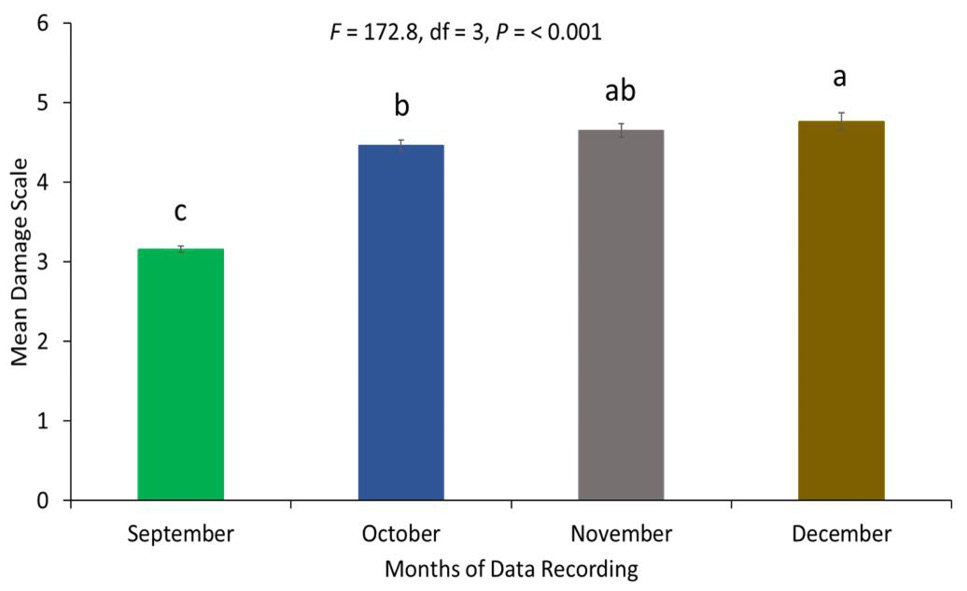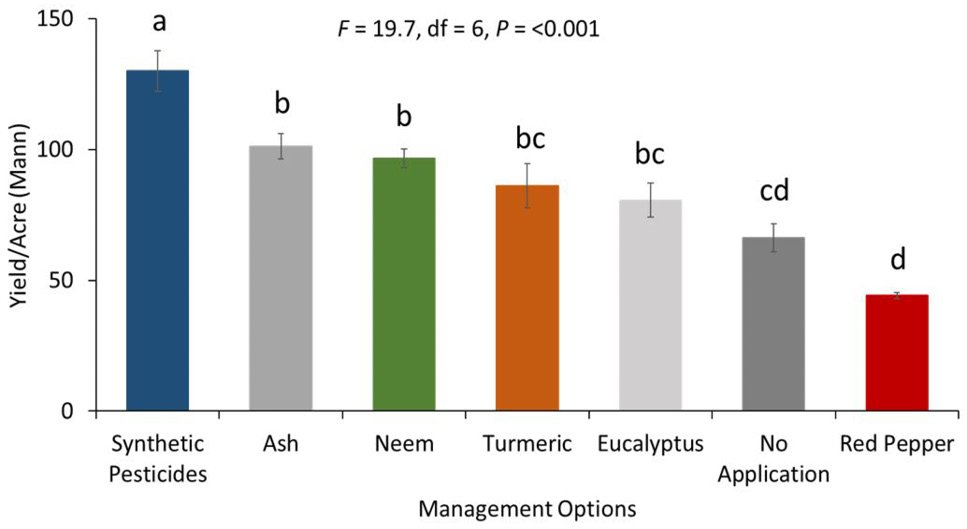Effects of Biorational Approaches and Synthetic Pesticides on Fall Armyworm Management and Arthropod Diversity in Maize
Effects of Biorational Approaches and Synthetic Pesticides on Fall Armyworm Management and Arthropod Diversity in Maize
Ahmad Ibrahim Jalali1, Mudssar Ali1*, Hafiz Mohkum Hammad2,4 and Fawad Zafar Ahmad Khan1,3
Arthropod biodiversity recorded in pitfall traps: (A) Araneae, (B) Coleopterans, (C) Dermepterans, (D) Dipterans, (E) Hemipterans, (F) Hymenopterans, (G) Isopods, (H) Lepidopterans and (I) Orthopterans.
Arthropods observed on each plant in different management scheme in maize.
Fall armyworm damage on maize leaves during different months.
Fall armyworm damage on maize leaves in different management options.
Maize yield obtained in different management options.














